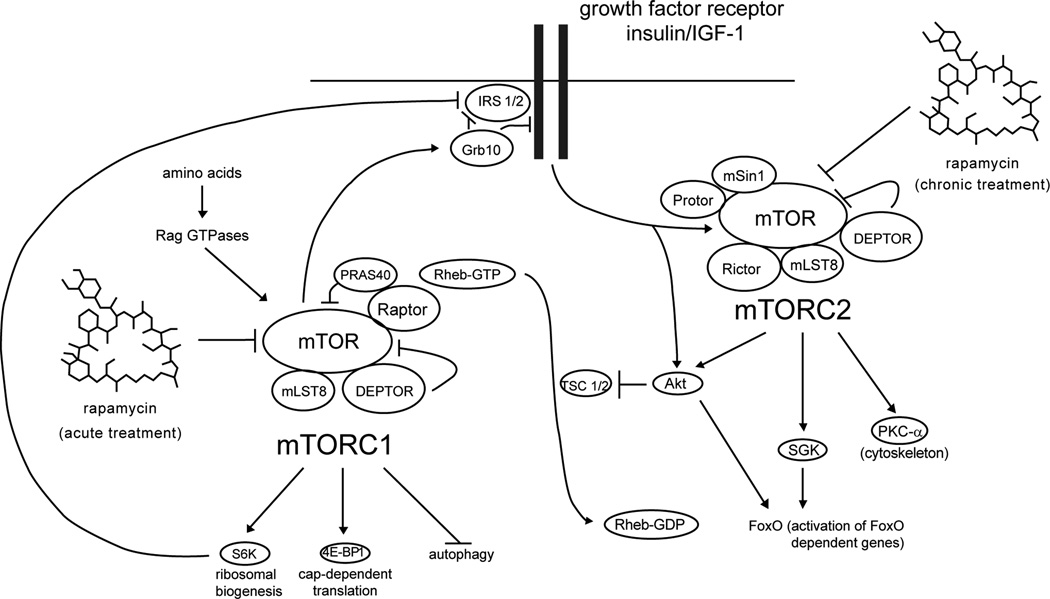Figure 2. Rapamycin.
Acute treatment with rapamycin directly inhibits mTORC1, blocking the phosphorylation of S6K1 and 4E-BP1. mTORC1 signaling causes feedback at the level of the insulin receptor, mediated in part by S6K through phosphorylation of IRS1/2 [163] and in part by Grb10 [164]and relieving this inhibition enhances insulin signaling to mTORC2. Chronic treatment with rapamycin inhibits mTORC2 indirectly, most likely by interfering with its the assembly [116] resulting in the decreased signaling to the mTORC2 substrates Akt, PKCα and SGK.

